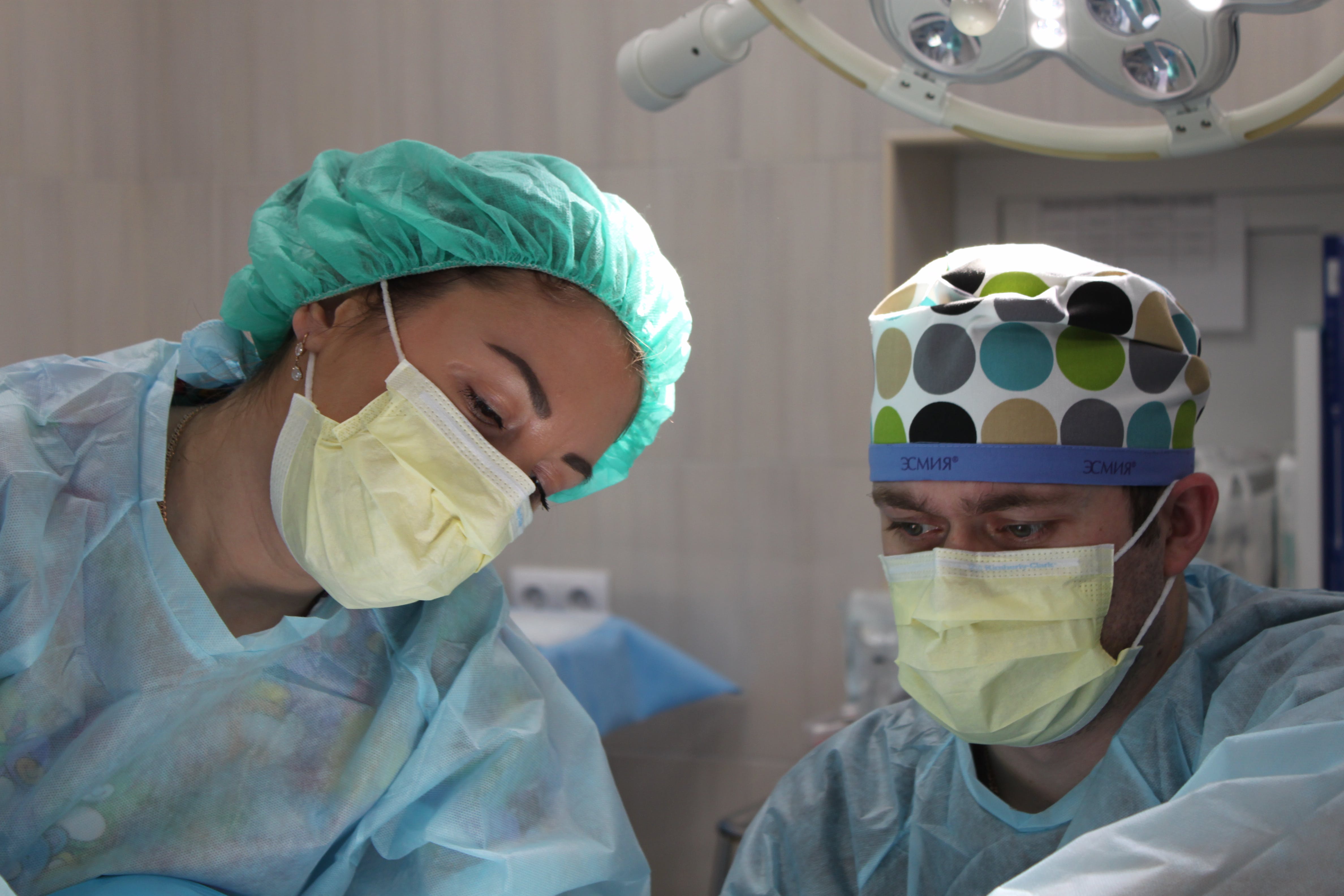BioAmniotic Under FDA regulations, an Institutional Review Board is a research group that has been formally designated to review and monitor biomedical research involving human subjects
Safeguarding Research Integrity: The Role of Institutional Review Boards Under FDA Regulations
In the landscape of biomedical research involving human subjects, ensuring ethical standards and patient safety is paramount. Under the regulatory purview of the U.S. Food and Drug Administration (FDA), Institutional Review Boards (IRBs) play a pivotal role in upholding these standards by meticulously reviewing and monitoring research protocols to safeguard the rights and welfare of study participants.
Under FDA regulations, an Institutional Review Board is a formally designated group tasked with the responsibility of reviewing, approving, and overseeing biomedical research involving human subjects. The core mandate of an IRB is to evaluate the ethical, scientific, and regulatory aspects of research protocols to ensure that the proposed studies adhere to established principles of beneficence, justice, and respect for persons.
Central to the function of an IRB is the protection of human subjects' rights and welfare. IRBs meticulously assess research protocols to ascertain that participants are adequately informed about the nature, risks, and potential benefits of the study before providing their voluntary consent to participate. This process involves scrutinizing informed consent documents to ensure clarity, comprehensibility, and transparency regarding study procedures, potential risks, and alternative treatments.
Moreover, IRBs evaluate the scientific validity and methodological rigor of research protocols to ascertain that the proposed studies are scientifically sound and capable of generating meaningful data. This entails assessing the qualifications and credentials of investigators, the adequacy of study design and methodology, and the feasibility of recruiting and retaining participants.
Under FDA regulations, IRBs are vested with the authority to approve, require modifications to, or disapprove research protocols based on their assessment of the ethical, scientific, and regulatory considerations. Furthermore, IRBs are entrusted with the ongoing responsibility of monitoring approved studies to ensure compliance with regulatory requirements, protocol adherence, and the safety and well-being of study participants.
The establishment and operation of IRBs are governed by a comprehensive set of regulations outlined in the FDA's Code of Federal Regulations (CFR), specifically 21 CFR Part 56. These regulations delineate the composition, responsibilities, procedures, and record-keeping requirements for IRBs to ensure consistency, accountability, and transparency in the conduct of biomedical research involving human subjects.
In conclusion, Institutional Review Boards play a pivotal role in the oversight and regulation of biomedical research involving human subjects under FDA jurisdiction. By upholding ethical standards, safeguarding patient rights, and ensuring scientific integrity, IRBs serve as critical guardians of research integrity, fostering public trust and confidence in the pursuit of scientific advancement and medical innovation.

What We Do
We Work With Institutional Review Boards To Assist The Transfer Of Data As It Pertains To Efficacy Of Amniotic Membranes In Wound Healing
Institutional Review Board Services
Assist In Collecting Hippa Compliant Physician Data Points As It Pertains To Wound Care
Identify Wound Care Data Points
Identify Required Data Points: Determine the specific data points relevant to wound care that need to be collected from physicians. This may include patient demographics, wound characteristics, treatment modalities, clinical outcomes, and follow-up care.
Ensure HIPAA Compliance
Adhere to HIPAA regulations throughout the data collection process to safeguard the privacy and confidentiality of patient information. Obtain necessary authorizations and permissions for accessing protected health information (PHI) and ensure that data handling procedures comply with HIPAA guidelines.
Anonymize Patient Information
Remove or de-identify personally identifiable information (PII) from physician data submissions to protect patient privacy. Use unique identifiers or pseudonyms to anonymize patient records while still allowing for meaningful analysis of wound care outcomes.
Standardize Data Collection Methods
Establish standardized data collection methods and formats to ensure consistency and accuracy in physician reporting. Provide clear guidelines and templates for documenting relevant data points to facilitate data aggregation and analysis.
Train Physicians on Data Collection
Offer training and support to physicians on how to collect and report relevant data points in a HIPAA-compliant manner. Educate them on the importance of protecting patient privacy and adhering to data security protocols throughout the data collection process.

Collecting HIPAA-compliant physician data points pertaining to wound care
Collecting HIPAA-compliant physician data points pertaining to wound care involves careful consideration of privacy regulations while gathering relevant information. Here's how you can assist in this process:
-
Identify Required Data Points: Determine the specific data points relevant to wound care that need to be collected from physicians. This may include patient demographics, wound characteristics, treatment modalities, clinical outcomes, and follow-up care.
-
Ensure HIPAA Compliance: Adhere to HIPAA regulations throughout the data collection process to safeguard the privacy and confidentiality of patient information. Obtain necessary authorizations and permissions for accessing protected health information (PHI) and ensure that data handling procedures comply with HIPAA guidelines.
-
Secure Data Transmission: Implement secure methods for transmitting physician data, such as encrypted email or secure file transfer protocols, to prevent unauthorized access or interception of sensitive information during transmission.
-
Anonymize Patient Information: Remove or de-identify personally identifiable information (PII) from physician data submissions to protect patient privacy. Use unique identifiers or pseudonyms to anonymize patient records while still allowing for meaningful analysis of wound care outcomes.
-
Obtain Informed Consent: Obtain informed consent from patients for the collection and use of their medical data for research or quality improvement purposes. Ensure that patients understand the purpose of data collection, how their information will be used, and any potential risks or benefits involved.
-
Standardize Data Collection Methods: Establish standardized data collection methods and formats to ensure consistency and accuracy in physician reporting. Provide clear guidelines and templates for documenting relevant data points to facilitate data aggregation and analysis.
-
Train Physicians on Data Collection: Offer training and support to physicians on how to collect and report relevant data points in a HIPAA-compliant manner. Educate them on the importance of protecting patient privacy and adhering to data security protocols throughout the data collection process.
-
Monitor Data Quality: Regularly monitor the quality and completeness of physician data submissions to ensure accuracy and reliability. Provide feedback and guidance to physicians as needed to address any discrepancies or deficiencies in data reporting.
-
Secure Data Storage: Store physician data securely in compliance with HIPAA requirements, using encrypted storage solutions and access controls to prevent unauthorized access or disclosure of PHI. Implement regular data backups and disaster recovery plans to protect against data loss or corruption.
-
Audit Trail: Maintain detailed audit trails of data access and usage to track who has accessed patient information and for what purpose. Monitor for any unauthorized or suspicious activities and take appropriate action to mitigate potential security breaches.
By following these guidelines, you can assist in collecting HIPAA-compliant physician data points related to wound care while safeguarding patient privacy and confidentiality.

Understanding Never Events and Pressure Wound Ulcers: Impact on CMS Medical Facility Reimbursements
In the realm of healthcare, certain adverse events are deemed preventable and egregious, leading to serious consequences for both patients and healthcare providers. These events, often referred to as "Never Events," encompass medical errors and complications that should never occur in a healthcare setting. Among these Never Events, pressure wound ulcers stand out as a significant concern due to their preventable nature and potential impact on patient outcomes and healthcare facility reimbursements, particularly under the regulations of the Centers for Medicare & Medicaid Services (CMS).
Pressure wound ulcers, also known as pressure ulcers or bedsores, result from prolonged pressure on the skin, typically in individuals who are bedridden, immobile, or have limited mobility. These wounds can lead to severe complications, including infection, tissue necrosis, and systemic illness. Recognizing the preventable nature of pressure wounds and their potential to cause harm, CMS has implemented stringent guidelines and reimbursement policies aimed at incentivizing healthcare facilities to prioritize pressure ulcer prevention and management.
Under CMS regulations, healthcare facilities, including hospitals, nursing homes, and long-term care facilities, are subject to penalties for certain Never Events, including the development of hospital-acquired pressure ulcers. These penalties may include financial repercussions, such as reduced Medicare and Medicaid reimbursements, as well as public reporting of adverse events, which can tarnish a facility's reputation and credibility.
The financial implications of Never Events, including pressure wound ulcers, extend beyond immediate reimbursement penalties. Healthcare facilities may also incur additional costs associated with the treatment and management of preventable complications, such as prolonged hospital stays, surgical interventions, and specialized wound care services. Moreover, the loss of trust and confidence from patients, families, and regulatory agencies can have long-term repercussions on a facility's financial viability and sustainability.
To mitigate the risk of Never Events and pressure wound ulcers, healthcare facilities must implement comprehensive prevention strategies and quality improvement initiatives. This includes staff education and training on pressure ulcer prevention protocols, regular skin assessments for at-risk patients, implementation of evidence-based interventions to reduce pressure and friction, and robust documentation of preventive measures and outcomes.
By prioritizing patient safety, adherence to CMS, regulations and a culture of continuous quality improvement, healthcare facilities can minimize the incidence of Never Events, including pressure wound ulcers, and safeguard their reimbursement rates and reputation. Ultimately, the prevention of pressure ulcers not only enhances patient outcomes but also reinforces the commitment of healthcare providers to delivering high-quality, safe, and compassionate care.

Immunotherapy's Revolutionary Potential in Treating Stage 3 and Stage 4 Pressure Wound Ulcers in Diabetic Neuropathy
Pressure wound ulcers, particularly in individuals with diabetic neuropathy, represent a significant challenge in healthcare due to their propensity for chronicity, complications, and limited treatment options. However, emerging research in immunotherapy offers a promising avenue for addressing these complex wounds and revolutionizing their management, especially in advanced stages such as stage 3 and stage 4.
Diabetic neuropathy, a common complication of diabetes, results in nerve damage and diminished sensation in the extremities, predisposing individuals to pressure injuries. Stage 3 and stage 4 pressure ulcers, characterized by full-thickness tissue loss extending through the skin and into deeper structures, pose significant clinical challenges and often resist conventional wound healing approaches.
Immunotherapy, which harnesses the body's immune system to combat diseases, has garnered attention in recent years for its potential applications in wound healing. One promising approach involves the use of cytokines, growth factors, and cellular therapies to modulate immune responses, promote tissue regeneration, and accelerate wound closure.
Cytokines such as granulocyte-macrophage colony-stimulating factor (GM-CSF) and interleukin-10 (IL-10) have shown efficacy in stimulating the proliferation and activation of immune cells involved in wound repair, enhancing the production of collagen and promoting angiogenesis—the formation of new blood vessels essential for delivering oxygen and nutrients to healing tissues.
Cellular therapies, including mesenchymal stem cells (MSCs) and immune cell-based therapies, hold immense potential in promoting tissue regeneration and modulating inflammatory responses in chronic wounds. MSCs, with their immunomodulatory properties and ability to differentiate into various cell types, have demonstrated efficacy in promoting wound healing and tissue regeneration in preclinical and clinical studies.
Furthermore, immunotherapeutic approaches targeting specific pathways implicated in diabetic neuropathy, such as nerve growth factor (NGF) and vascular endothelial growth factor (VEGF), offer additional avenues for mitigating neuropathic pain, promoting nerve regeneration, and enhancing wound healing in diabetic patients.
While immunotherapy holds great promise in addressing stage 3 and stage 4 pressure ulcers in diabetic neuropathy, challenges remain in translating these experimental approaches into clinical practice. Issues such as standardization of treatment protocols, optimization of dosing and delivery methods, and long-term safety and efficacy assessments warrant further investigation.
In conclusion, immunotherapy represents a revolutionary paradigm shift in the management of stage 3 and stage 4 pressure wound ulcers in diabetic neuropathy. By harnessing the body's innate immune responses and leveraging cutting-edge cellular and molecular technologies, immunotherapy offers new hope for improving outcomes and quality of life for patients grappling with these debilitating wounds. Continued research and clinical trials are essential to unlock the full potential of immunotherapy and usher in a new era of wound healing innovation.
WOUND CARE IMPROVEMENTS BRINGS OUT THE SMILES
Ok - Say You Are Facing A Wound That Just Won't Heal. Say It's Been Documented For At Least 30 Days And The Physician Has The Records - That Qualifies The Senior Patient Under Medicare Part B






